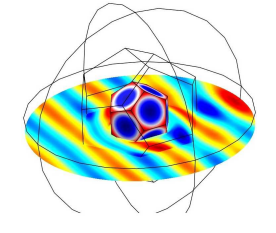By editor
The science of invisibility is rapidly moving from a focus on research to a focus on development. In other words, this discipline is changing from one of science to one of engineering
So we’re beginning to glimpse how engineers are turning the few hugely complex and expensive cloaks made so far into much simpler and cheaper devices.
Today, Oliver Paul at the University of Kaiserslautern in Germany and a few friends reveal an eminently practical way of making invisibility cloaks of any size and shape.
Their idea is simple. Creating a cloak that exactly follows the shape of the object it is intended to hide is hard because curve cloaks are hard to make.
Instead, Paul and co approximate the shape using flat facets. These ‘invisibility tiles’ fit together in the same way as the triangular facets in a computer animation. And since each flat tile is relatively simple and easy to make, it becomes much cheaper and easier to build complex cloaks.
So far this is just an idea. Their paper outlines the approach and simulates how well a dodecahedral cloak can hide a sphere. The faceted cloak isn’t as good as a smooth one but it’s not bad either.
http://www.technologyreview.com/blog/arxiv/27287/


